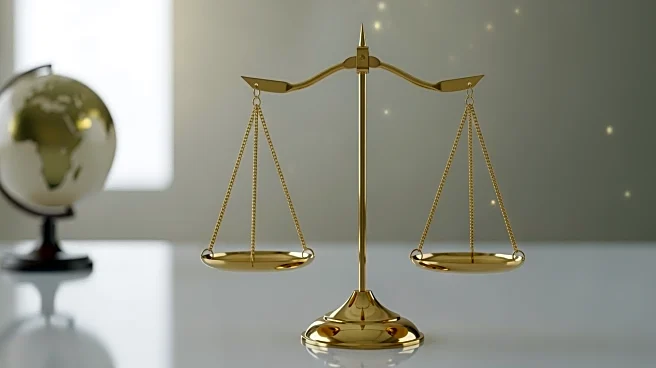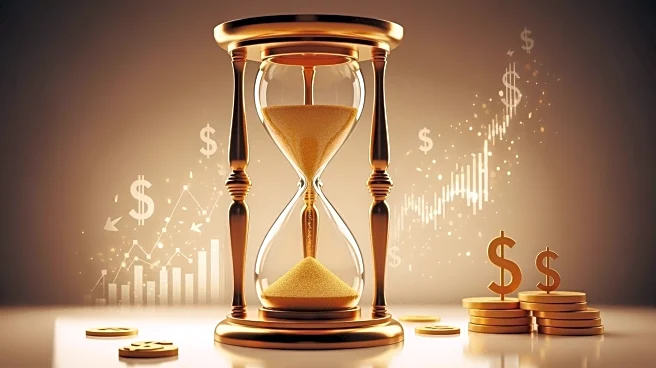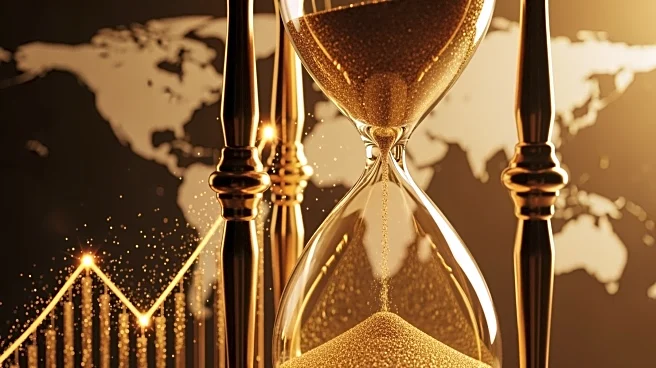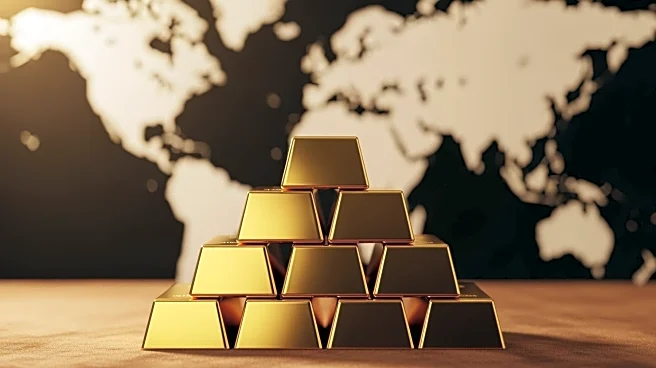What's Happening?
Gold prices have reached unprecedented levels, surpassing $4,300 per ounce for the first time, marking a 60% increase year-to-date. This surge is attributed to expectations of Federal Reserve rate cuts,
political uncertainty in the U.S., and global geopolitical tensions. Analysts from Metals Focus and HSBC predict that gold could reach $5,000 per ounce if current conditions persist. The demand for gold is further fueled by record ETF inflows and significant central bank purchases. In Asia, the Diwali and Dhanteras festivals have driven Indian gold premiums to decade highs, with domestic prices reaching record levels. Silver has also seen a significant rise, hitting a 14-year high.
Why It's Important?
The surge in gold prices reflects broader economic and geopolitical uncertainties, impacting various stakeholders. Investors view gold as a safe-haven asset amid fears of U.S. political instability, trade tensions, and potential Federal Reserve policy shifts. The increase in gold prices benefits investors and central banks holding significant gold reserves, while potentially impacting industries reliant on gold as a raw material. The rise in gold prices also indicates a shift in investor sentiment towards safer assets, which could influence broader market dynamics and economic policies.
What's Next?
Analysts anticipate continued volatility in gold prices, with potential further increases if the Federal Reserve proceeds with expected rate cuts. The upcoming Asia trade talks and U.S. debt ceiling discussions could also influence gold's trajectory. Seasonal demand in Asia, particularly during India's wedding season, may sustain high local prices. However, any unexpected changes in Federal Reserve policy or a strengthening U.S. dollar could lead to profit-taking and a potential pullback in gold prices.
Beyond the Headlines
The current gold rally highlights the ongoing global economic challenges and the role of precious metals as a hedge against uncertainty. The sustained demand for gold underscores concerns about inflation, geopolitical tensions, and the stability of fiat currencies. This trend may prompt further diversification of reserves by central banks and increased interest in alternative investments by private investors.












